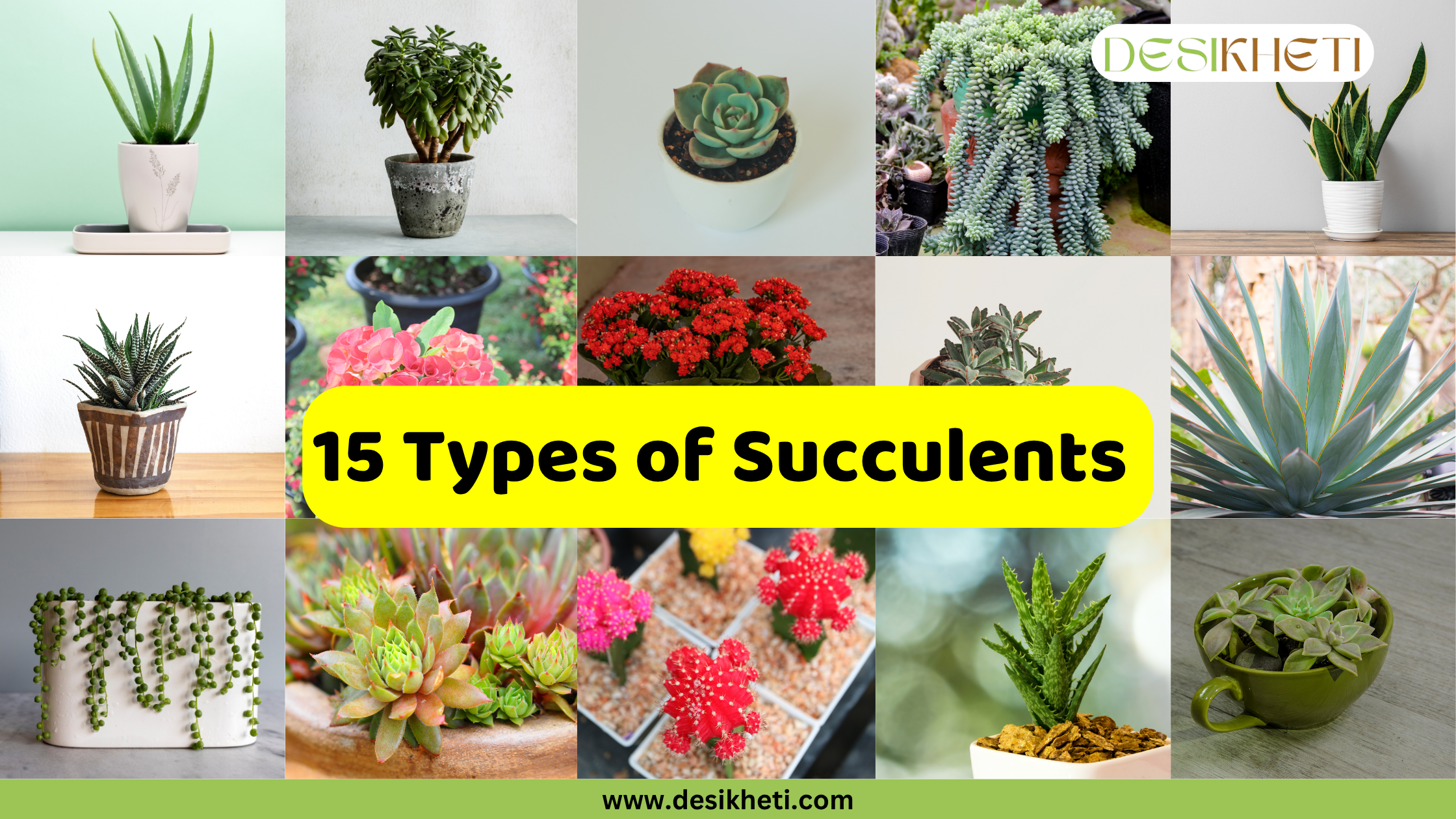Table of Contents
Introduction
Succulents are more than just trendy houseplants. They bring color, texture, and character into your space. Known for their ability to store water in thick, fleshy leaves, succulents are easy to grow, low-maintenance, and perfect for Indian homes. Whether you have a sunlit balcony, a cozy living room corner, or a desk that needs a touch of green, there’s a succulent to match your needs.
In this blog, we’ve curated 15 of the most attractive and beginner-friendly succulent plants. Each entry includes its unique features, placement ideas, sunlight requirements, and benefits to help you choose the right green companion. Let’s explore the 15 best indoor succulents that thrive effortlessly and elevate your decor naturally!
15 Popular Succulent Plants
Aloe Vera
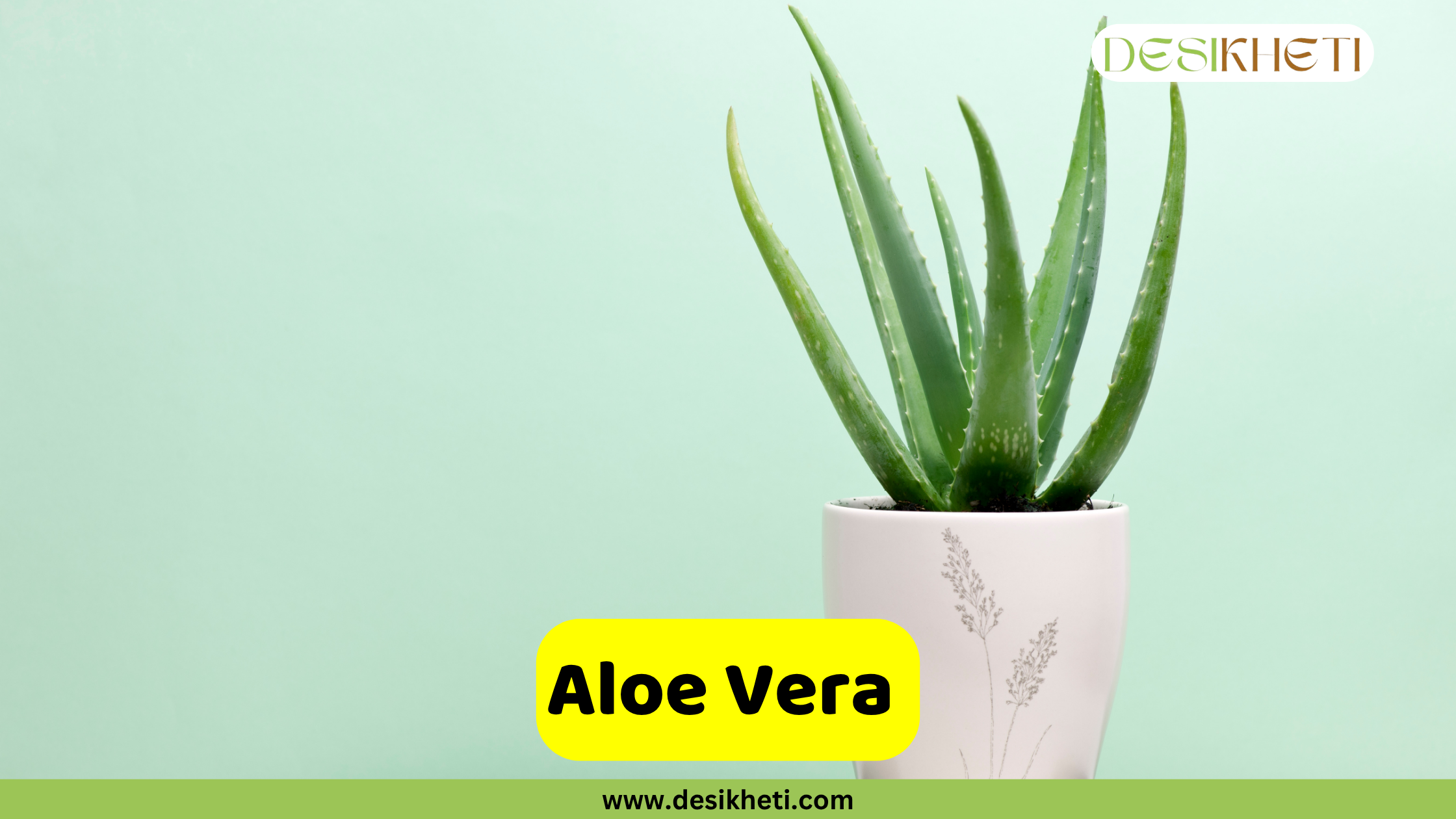
Botanical Name: Aloe barbadensis Miller
Aloe Vera is a stemless or short-stemmed succulent with thick, fleshy green leaves edged with small white teeth. The leaves grow in a rosette pattern and may reach up to 24–36 inches in length. This hardy plant thrives in warm temperatures ranging between 18–30°C and should be kept in well-draining cactus or succulent soil. It is not frost-tolerant and prefers that the soil be allowed to dry out completely between watering. The plant produces yellow tubular flowers on a spike up to 90 cm tall during summer, although flowering is rare in indoor conditions.
Ideal placement for Aloe Vera is in bright indoor locations such as sunny window sills, or semi-shaded balconies and verandas. It enjoys bright, indirect light or partial sunlight and does best when the soil is allowed to dry completely between waterings.
Uses & Benefits:
- The leaf gel is widely used in skin care and for treating minor burns.
- Has cooling, antibacterial, and moisturizing properties.
- Used in many cosmetic, medicinal, and hair care products.
Propagation Methods:
Offsets: Aloe Vera produces small offshoots (pups) at the base. Gently separate these pups from the main plant and plant them in new pots with well-draining soil.
Leaf Cuttings: While less common and with low success rates, leaf cuttings can be used. Allow the cut end to callous over for a few days before planting in soil.
Jade Plant
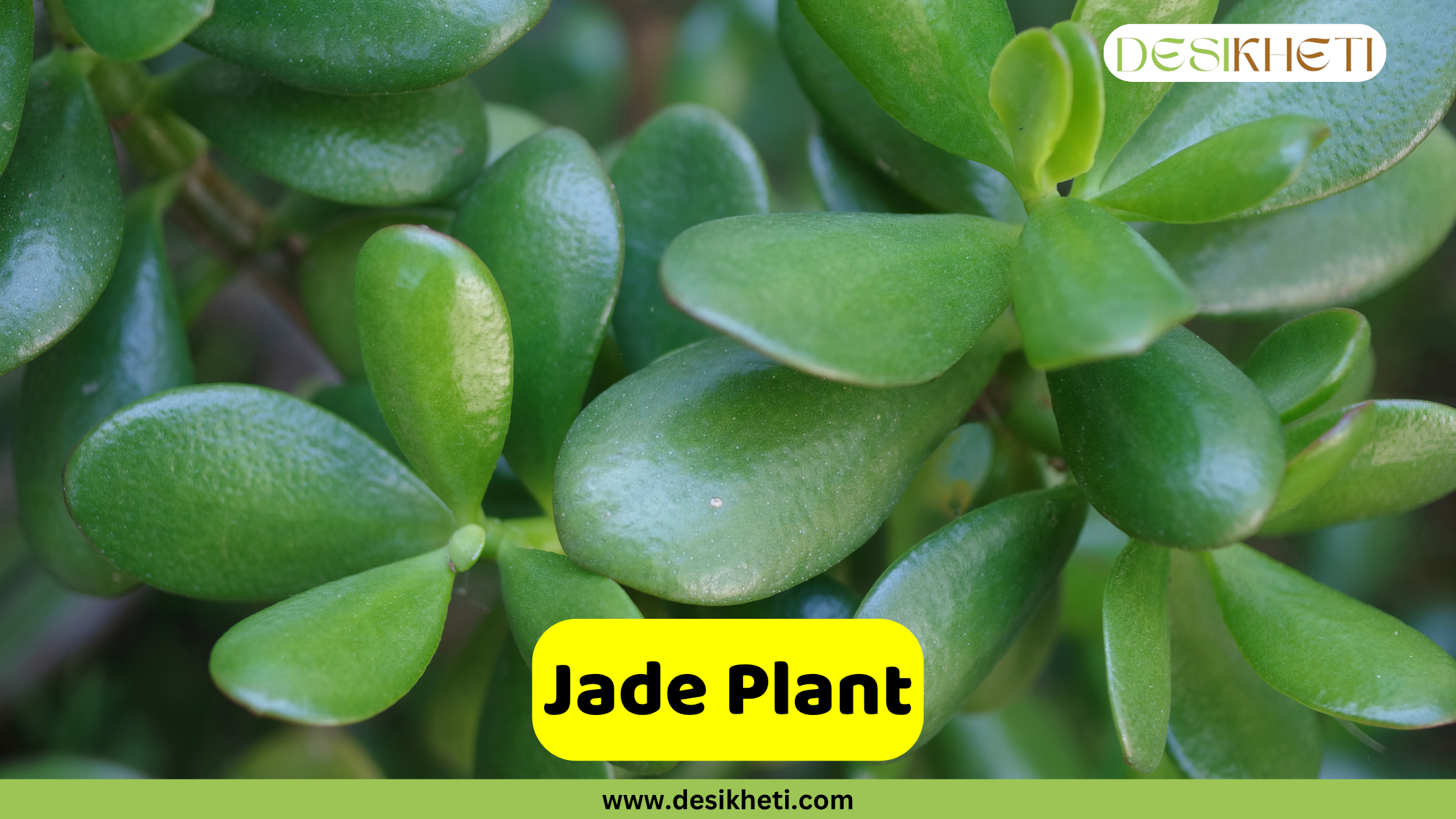
Botanical Name: Crassula ovata
The Jade Plant is a compact, slow-growing succulent with thick, woody stems and oval-shaped, glossy green leaves. It is often associated with luck and prosperity in Indian homes. Indoors, it can grow up to 3–4 feet tall and resembles a miniature tree.
Ideal placement includes indoor spaces like living rooms, study areas, or office desks near bright windows. Jade plants enjoy bright, indirect light and can tolerate some direct morning sunlight. Overwatering should be avoided to prevent root rot. Allow the soil to dry out completely between waterings.
Uses & Benefits:
- Considered a good luck plant and often used in Vastu/Feng Shui.
- Aesthetic appeal adds a bonsai-like charm to interiors.
- Extremely low maintenance and easy to propagate.
Propagation Methods:
Stem Cuttings: Take a healthy stem cutting, allow it to be callous over for a few days, then plant it in well-draining soil.
Leaf Cuttings: Allow the leaf to be callous over for a few days, then lay it on well-draining soil. Roots will develop over time.
Echeveria
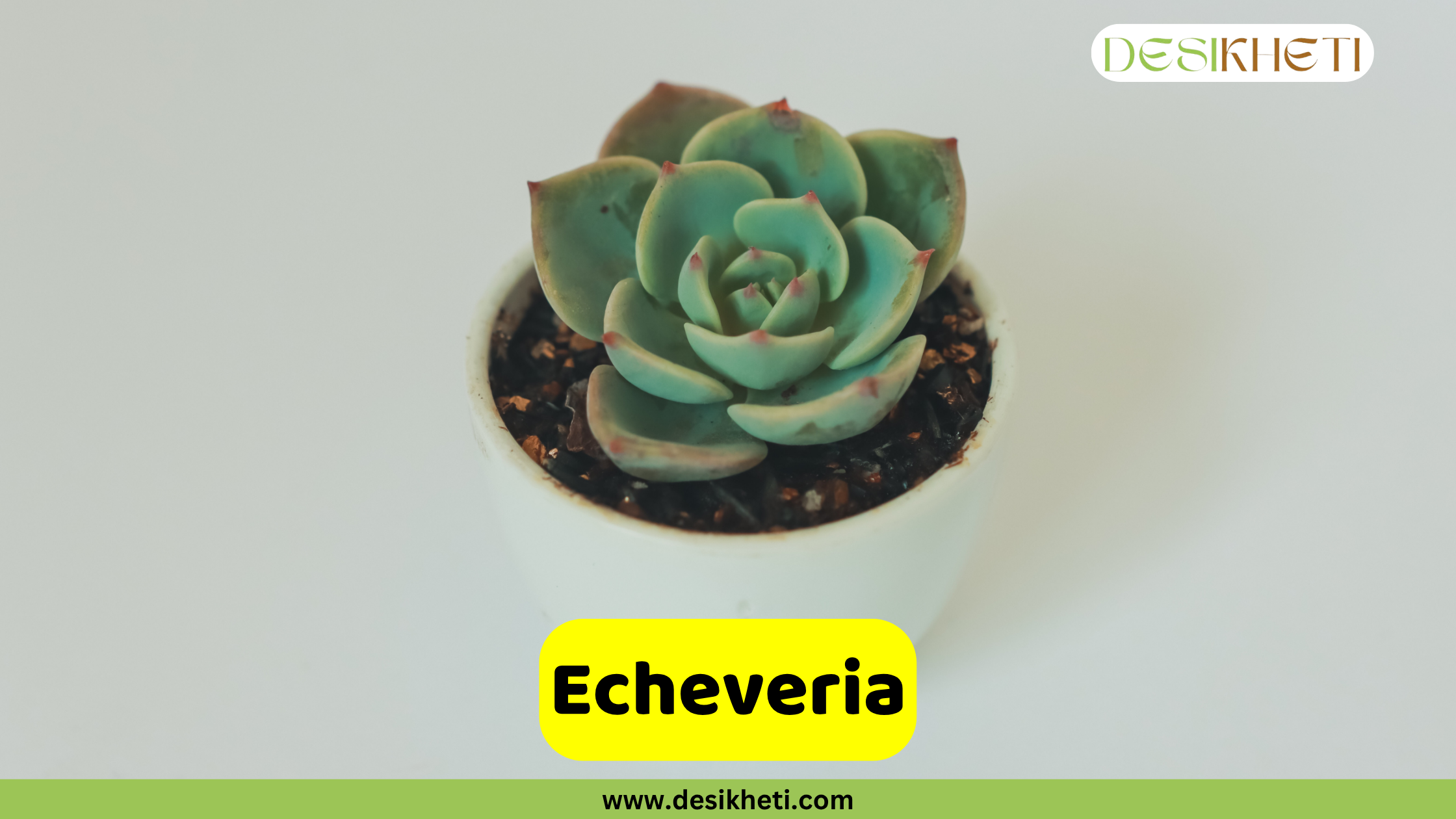
Botanical Name: Echeveria spp.
Echeverias are small, rosette-forming succulents with fleshy, colorful leaves that range from green and blue to pink or purple. Their symmetrical growth and compact size (typically 4–12 inches wide) make them popular for container gardening. These succulents prefer full sun to bright, indirect light and grow well in well-draining soil. Place Echeveria in sunny indoor locations like window sills or semi-outdoor areas such as balconies. They are sensitive to excess humidity. During the monsoon or cold months, it’s best to keep them indoors.
Uses & Benefits:
- Decorative plant ideal for succulent trays, terrariums, and rock gardens.
- Excellent for gifting and table arrangements.
- Easy to propagate from leaves or offsets.
Propagation Methods:
Offsets: Echeverias often produce small rosettes (pups) at the base. Gently separate these pups from the main plant and plant them in their own pots with well-draining soil.
Leaf Cuttings: Remove a healthy leaf from the plant, allow it to be callous over for a few days, then place it on top of moist, well-draining soil. Roots and new rosettes will develop over time. Not all Echeveria species propagate easily by leaves; some hybrids or cultivars may have low success rates.
Stem Cuttings: Cut a healthy stem with leaves, let it callous over, then plant it in well-draining soil. Roots will develop, and new growth will emerge.
Burro’s Tail
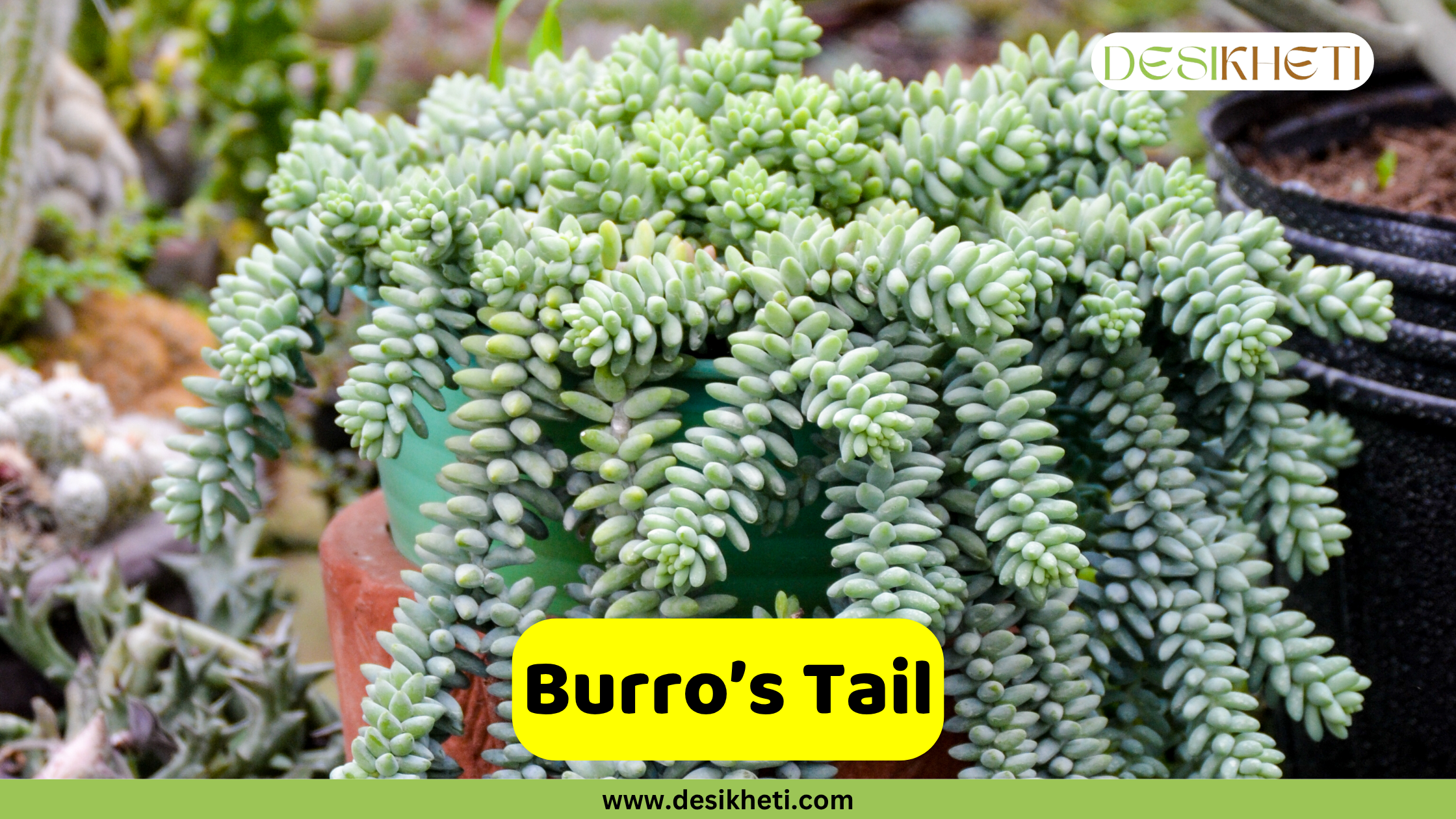
Botanical Name: Sedum morganianum
Burro’s Tail, also called Donkey’s Tail, is a trailing succulent with long stems densely packed with plump, tear-drop-shaped blue-green leaves. The cascading stems can grow up to 2–3 feet, making it perfect for hanging baskets. It prefers dry, sandy soil and warm temperatures between 18–24°C.
Ideal placement is in hanging pots near bright windows or in protected balconies with filtered sunlight. The leaves are delicate and tend to fall off easily if handled roughly. Water thoroughly, but allow the soil to dry out completely between waterings. Overwatering can lead to root rot.
Uses & Benefits:
- Ideal as a hanging décor plant for balconies and patios.
- Attractive trailing foliage enhances vertical gardening designs.
- Requires minimal maintenance once established.
Propagation Methods:
Stem Cuttings: Cut a healthy stem, allow the cut end to callous over for a few days, then plant it in well-draining soil. Roots will develop, and new growth will emerge.
Leaf Cuttings: Remove a healthy leaf, allow it to be callous over, then place it on top of moist, well-draining soil. Roots and new growth will develop over time.
Snake Plant
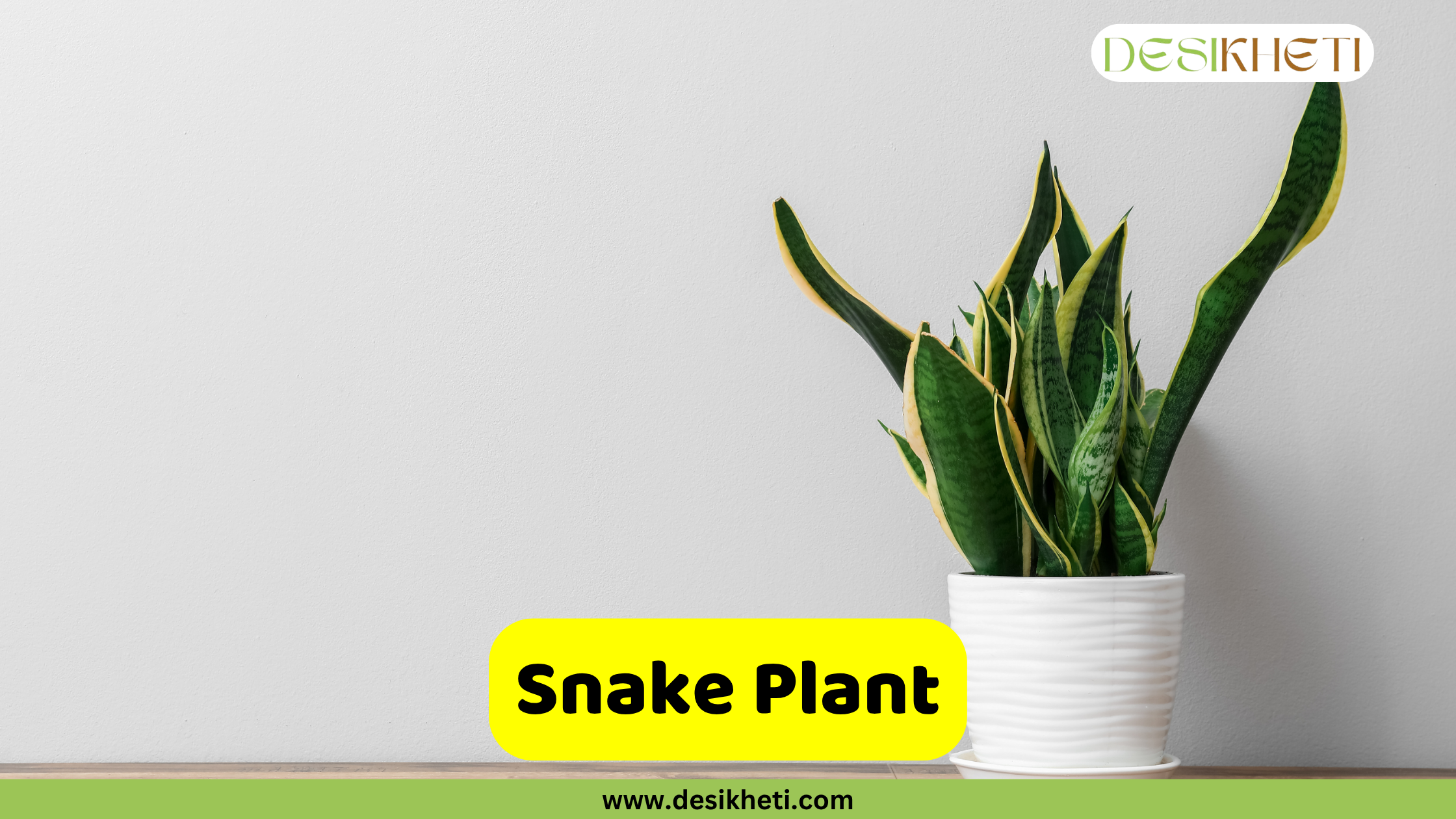
Botanical Name: Dracaena trifasciata (formerly Sansevieria trifasciata)
The Snake Plant is a hardy, upright succulent with sword-like leaves marked with yellow or silvery-grey variegation. It can grow up to 1 to 4 feet tall and adapts well to a wide range of indoor conditions. This plant is ideal for bedrooms, living rooms, and office corners.
It does well in areas with moderate to low light, making it a perfect indoor choice. Water sparingly; allow the soil to dry out completely between waterings to prevent root rot.
Uses & Benefits:
- One of the best air-purifying indoor plants.
- Very low maintenance and drought-tolerant.
- Releases oxygen at night, making it ideal for bedrooms.
Propagation Methods:
Division: The most effective method, especially for variegated varieties. Gently separate the rhizomes during repotting to create new plants.
Leaf Cuttings: Cut a healthy leaf at the base, allow it to be callous over for a few days, then plant it in well-draining soil. Roots will develop over time. Leaf cuttings may not retain variegation in some cultivars.
Water Propagation: Place the cut end of a leaf cutting in water, ensuring only the bottom is submerged. Change the water weekly until roots form, then transfer to soil.
Soil Propagation: Plant the cut end of a leaf directly into moist, well-draining soil and wait for roots to develop.
Zebra Plant
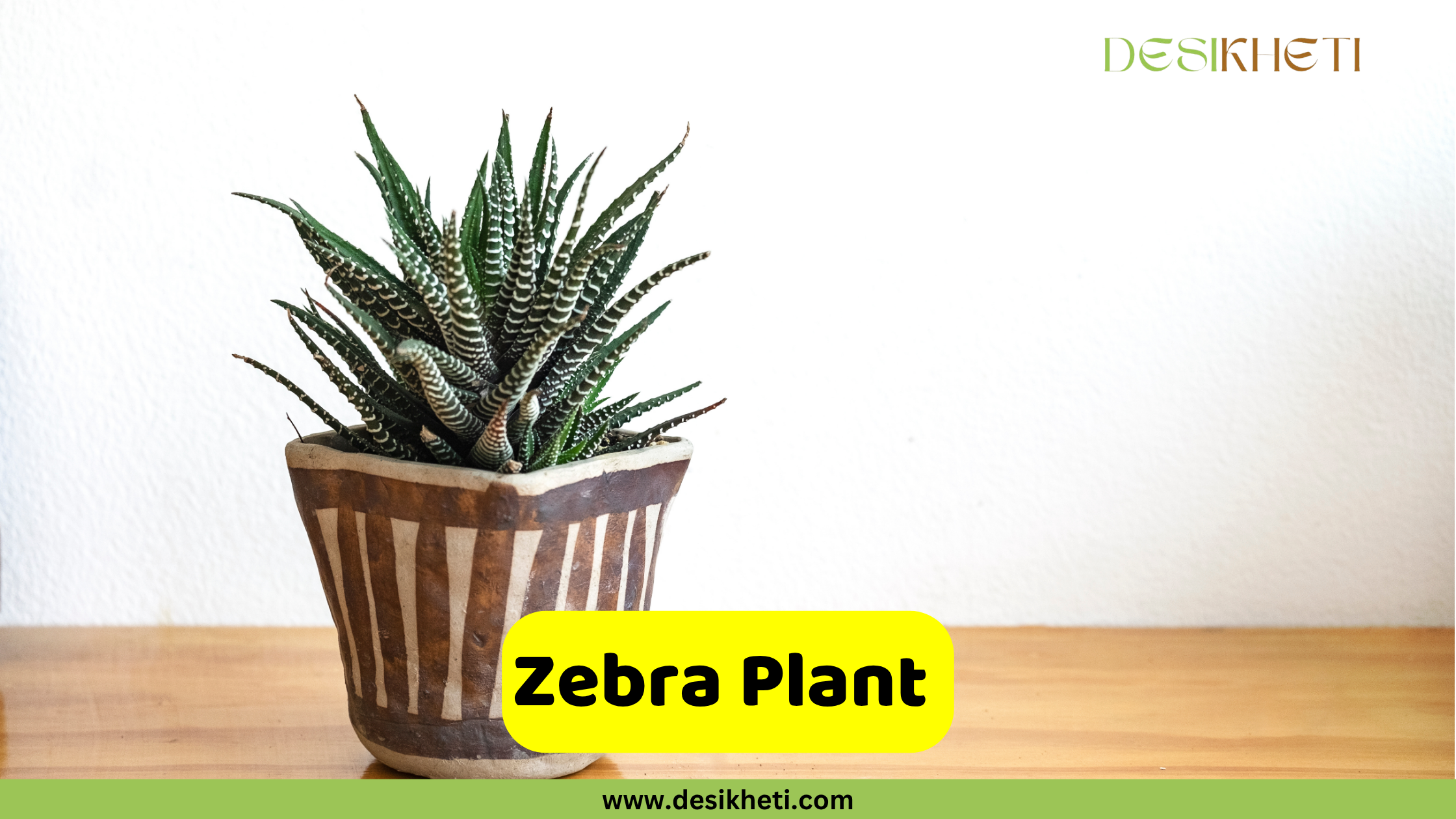
Botanical Name: Haworthiopsis fasciata
The Zebra Plant is a compact, eye-catching succulent known for its dark green, pointed leaves adorned with white, zebra-like horizontal stripes. It grows in a tight rosette shape and usually stays under 4–6 inches in height and width.
It’s best placed on tabletops, office desks, window sills, or in small indoor containers. The plant enjoys bright, indirect light and should be protected from harsh sunlight, which can cause leaf burn. It requires moderate watering, allowing the soil to dry out completely in between.
Uses & Benefits:
- Ideal for desktops and small indoor spaces due to its size.
- Adds texture and visual interest to succulent arrangements and terrariums.
- Easy to care for and propagate, perfect for beginners.
Propagation Methods:
Offsets (Pups): The most common and easiest method. Gently separate the pups from the mother plant and plant them in their own pots with well-draining soil.
Crown of Thorns
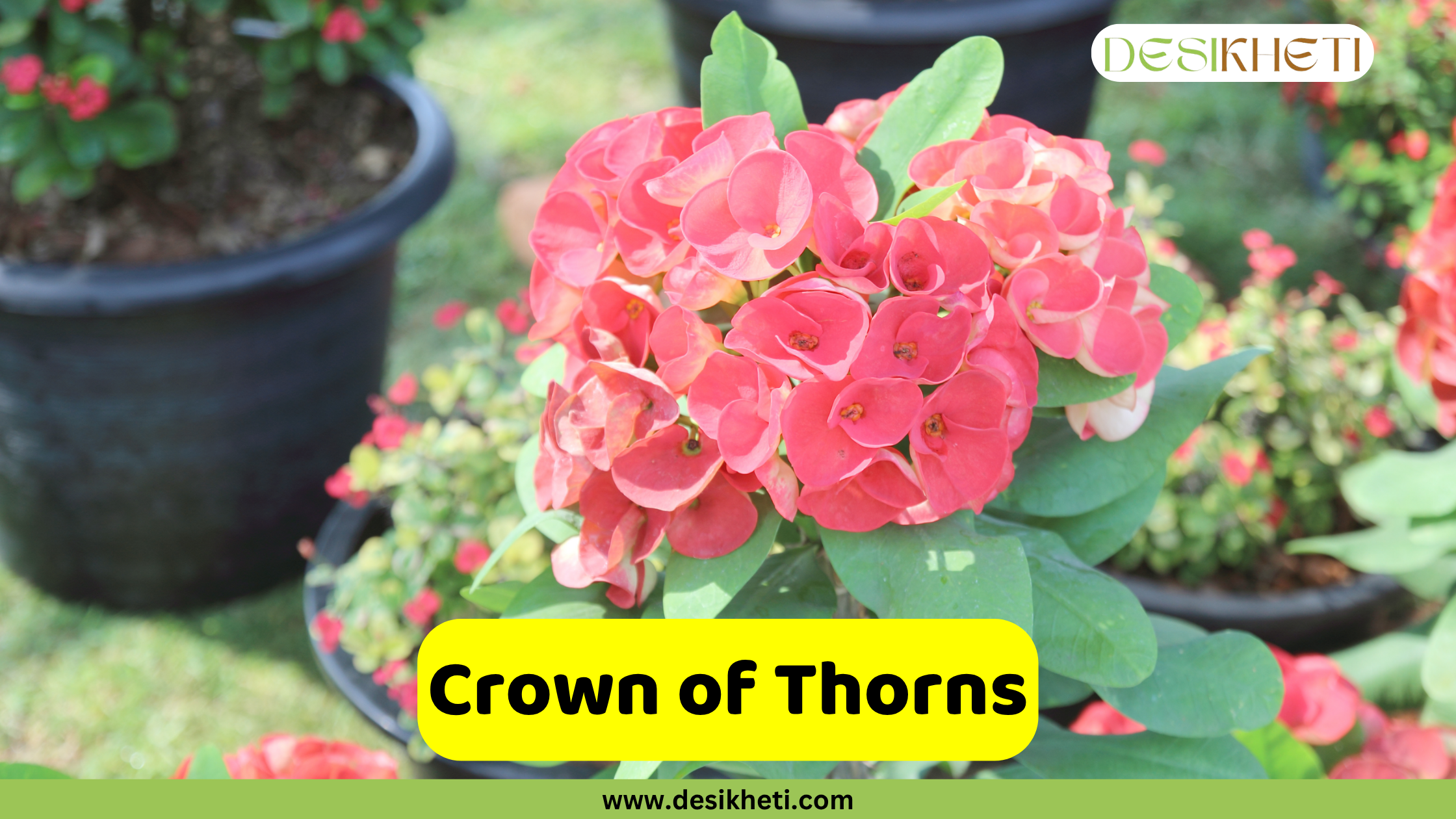
Botanical Name: Euphorbia milii
Crown of Thorns is a woody, shrubby succulent with thick green leaves, spiny stems, and colorful flower-like bracts in shades of red, pink, or yellow. It can bloom almost year-round if provided with enough sunlight. In containers, it typically grows 2–3 feet tall.
Ideal placement includes sunny balconies, verandas, and windows with full or strong indirect sunlight. It can be kept outdoors in warm climates but should be protected from heavy rains and frost. Allow the soil to dry out completely between waterings to prevent root rot.
Uses & Benefits:
- Adds a splash of color to home gardens and containers.
- Known for its long blooming season and drought resistance.
- Acts as a natural deterrent due to its spiny stems
- .Often used as a protective boundary plant in warm regions
Propagation Methods:
Stem Cuttings: The most common method. Cut a healthy stem with at least one node, allow it to be callous over a few days, then plant it in well-draining soil. Water sparingly until roots develop.
Flaming Katy
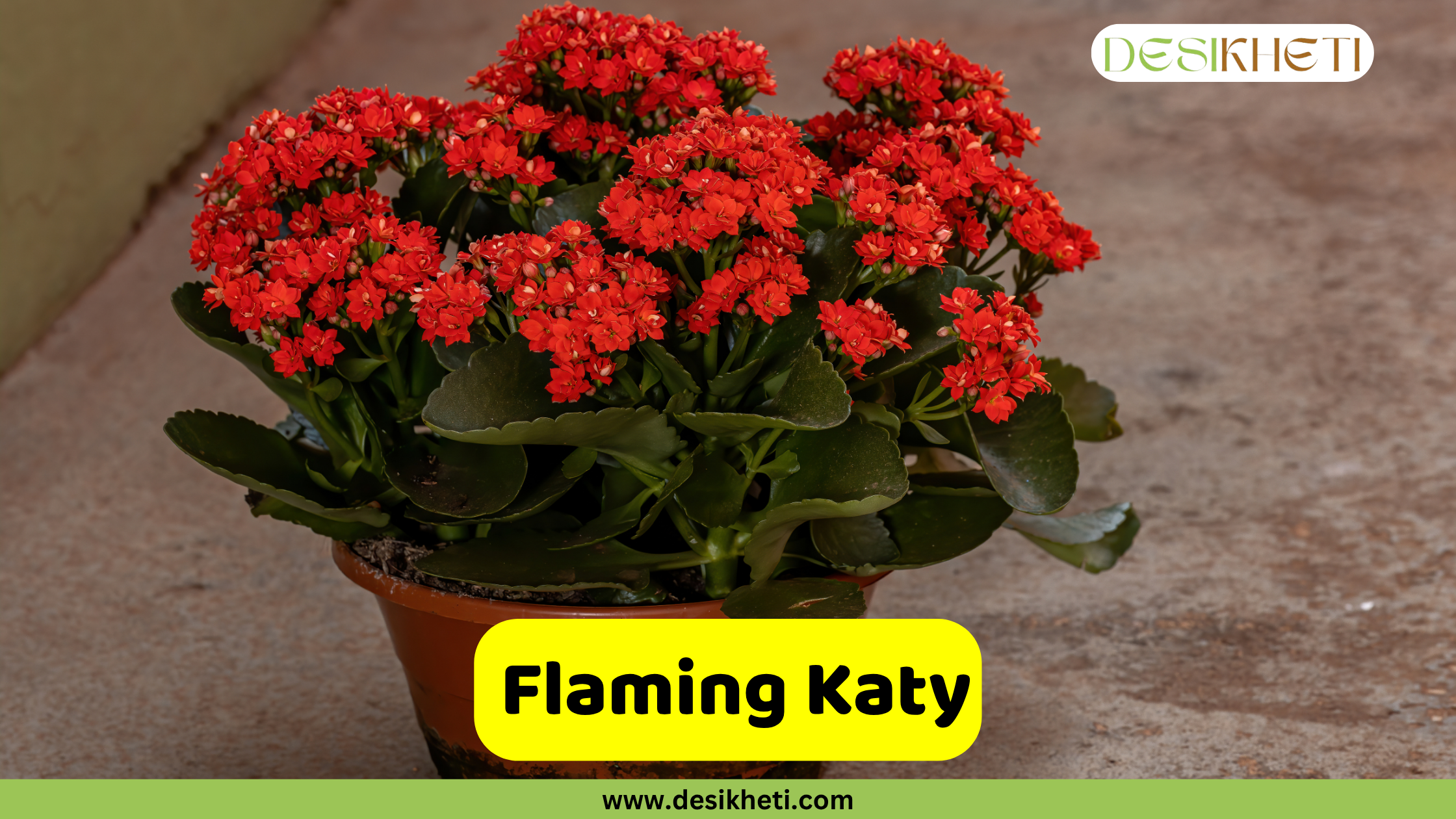
Botanical Name: Kalanchoe blossfeldiana
Flaming Katy is a small, bushy succulent with dark green, scalloped leaves and clusters of vivid, long-lasting flowers in red, pink, orange, yellow, or white. It typically grows 6–12 inches tall and wide, making it ideal for tabletops or window sills.
The plant thrives in bright, indirect sunlight and can be placed indoors near well-lit windows or outdoors in partially shaded spaces. Water thoroughly, but allow the soil to dry out completely between waterings. Overwatering can lead to root rot.
Uses & Benefits:
- Known for its vibrant blooms and decorative value.
- Ideal gift plant during festivals or celebrations.
- Enhances indoor aesthetics with minimal care.
- Attracts pollinators like bees when grown outdoors.
Propagation Methods:
Stem Cuttings: The most common method. Cut a healthy stem with at least one node, allow it to be callous over a few days, then plant it in well-draining soil. Water sparingly until roots develop.
Offsets: Some varieties produce small plantlets at the base, which can be separated and planted in their own pots.
Panda Plant
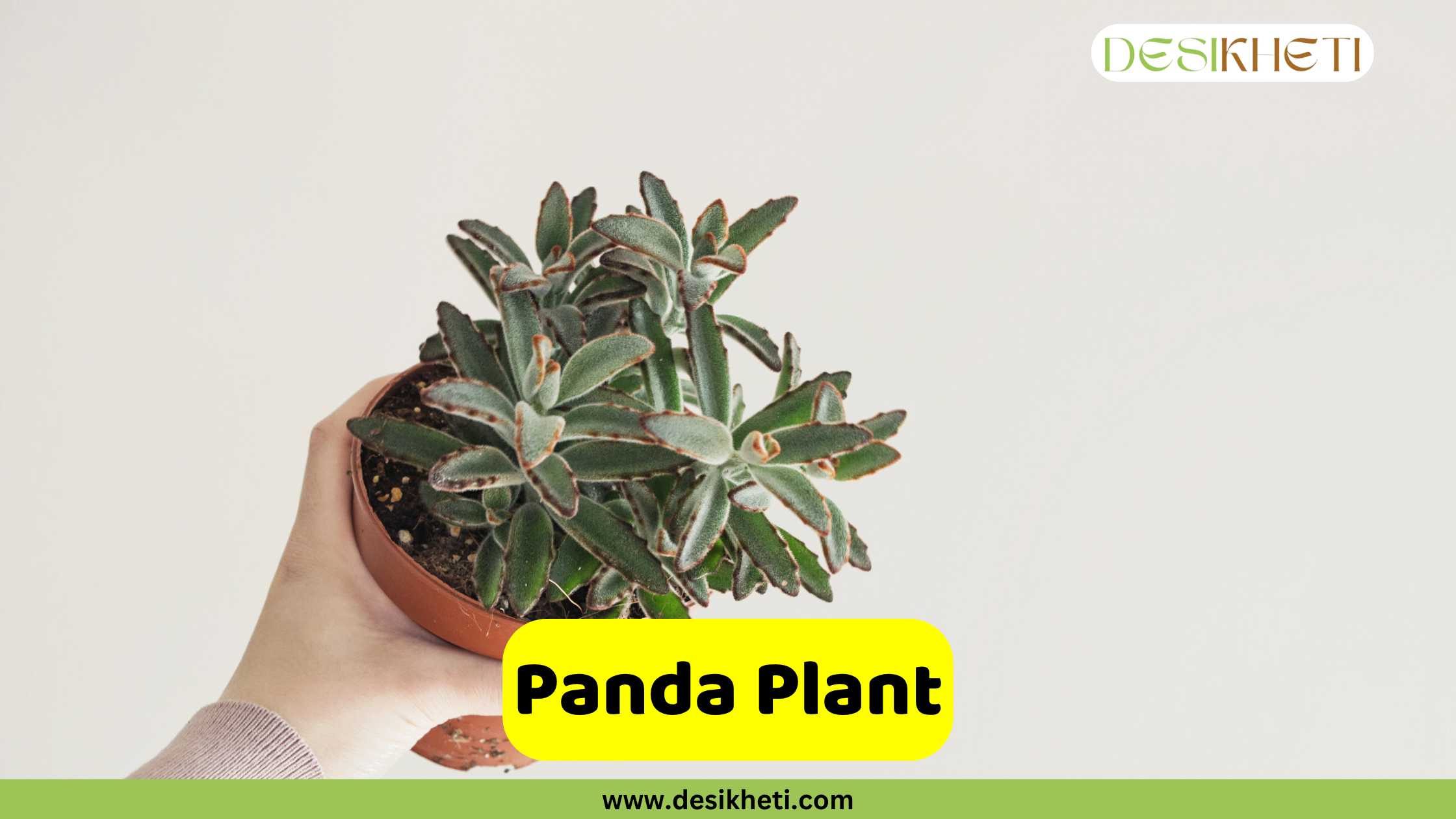
Botanical Name: Kalanchoe tomentosa
The Panda Plant is a charming, small succulent with thick, fuzzy, silvery-green leaves edged in brown or rust-colored tips. Its velvety texture makes it visually unique and pleasant to touch. This slow-growing, shrubby plant typically reaches a height of 1–2 feet and maintains a compact form, making it well-suited for indoor containers.
It thrives in bright, indirect sunlight. For ideal placement, consider sunny windowsills, office desks, or shelves where it can get sufficient light without direct exposure during peak hours. It prefers well-drained soil and allows the soil to dry out completely between waterings. Overwatering can lead to root rot.
Uses & Benefits:
- Adds a soft, tactile quality to indoor gardens.
- Excellent for small spaces and indoor decoration.
- Easy to propagate from leaves or stem cuttings.
- Low maintenance and beginner-friendly.
Propagation Methods:
Leaf Cuttings: Gently remove a healthy leaf, allow it to be callous over for a few days, then place it on well-draining soil. Mist lightly until roots develop.
Stem Cuttings: Cut a healthy stem, let it dry for a day or two, then plant it in soil. Water sparingly until new growth appears.
Agave
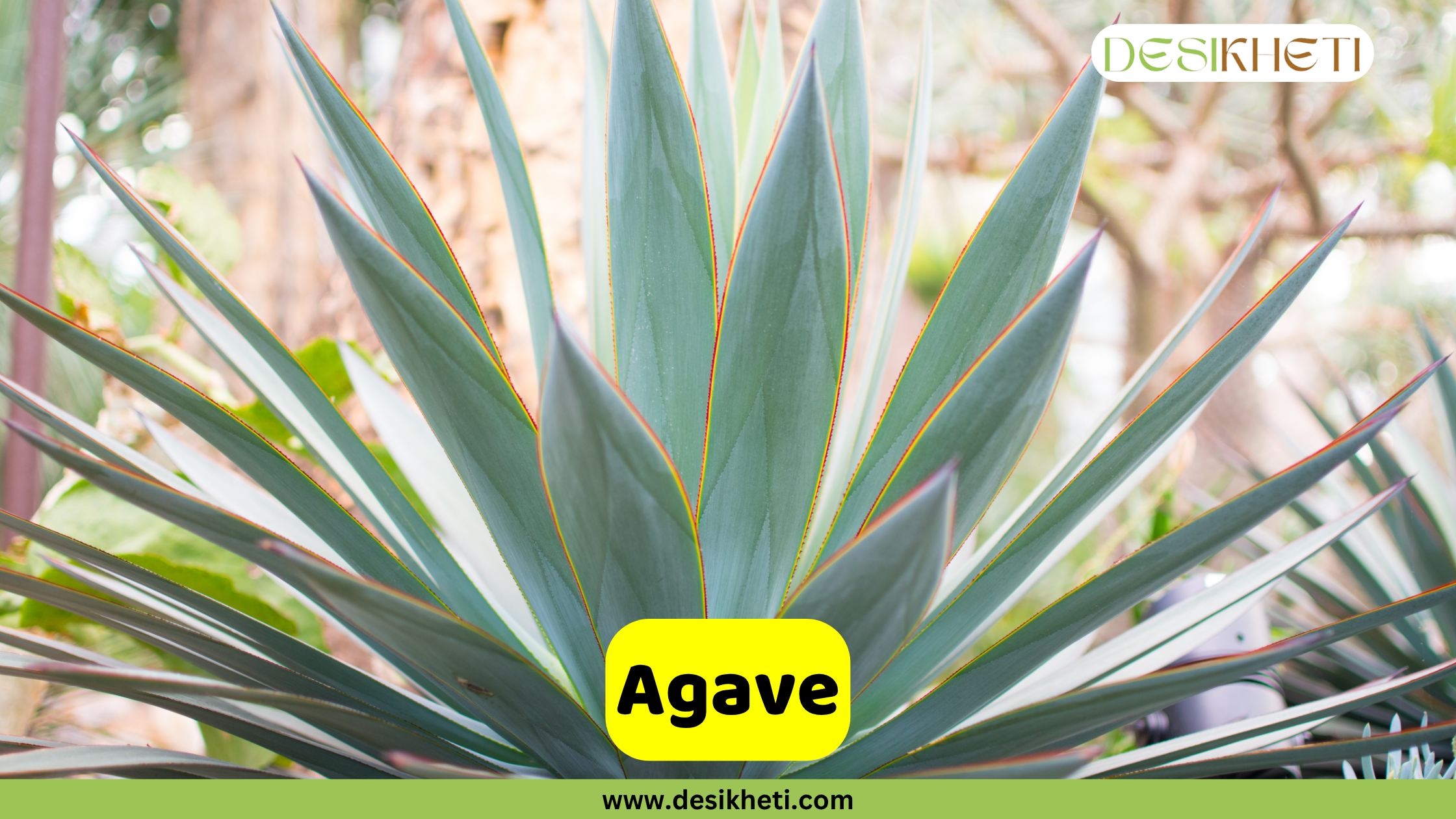
Botanical Name: Agave spp.
Agave is a striking, rosette-forming succulent known for its bold, sword-like leaves that taper to a point. Leaf colors range from green to bluish-grey, often accented with spines along the margins. Some species remain compact, while others grow up to 6 feet or more.
This hardy plant prefers full sunlight and thrives in hot, dry climates. Agaves do best in outdoor rock gardens, xeriscapes, or large containers exposed to direct sunlight. They require minimal watering, and well-drained, sandy soil is preferable.
Uses & Benefits:
- Ideal for xeriscaping and drought-tolerant landscapes.
- Serves as a strong architectural accent in gardens.
- Some species have edible or medicinal parts (e.g., agave syrup, fiber).
- Long lifespan and minimal maintenance needs.
Propagation Methods:
Offsets (Pups): Many agaves produce offsets around the base. Carefully separate these pups from the mother plant and replant them.
Bulbils: Some species produce bulbils on the flowering stalk. These can be harvested and planted once they develop roots.
Seeds: Agaves can be grown from seeds, though this method is slower and requires patience.
Sempervivum
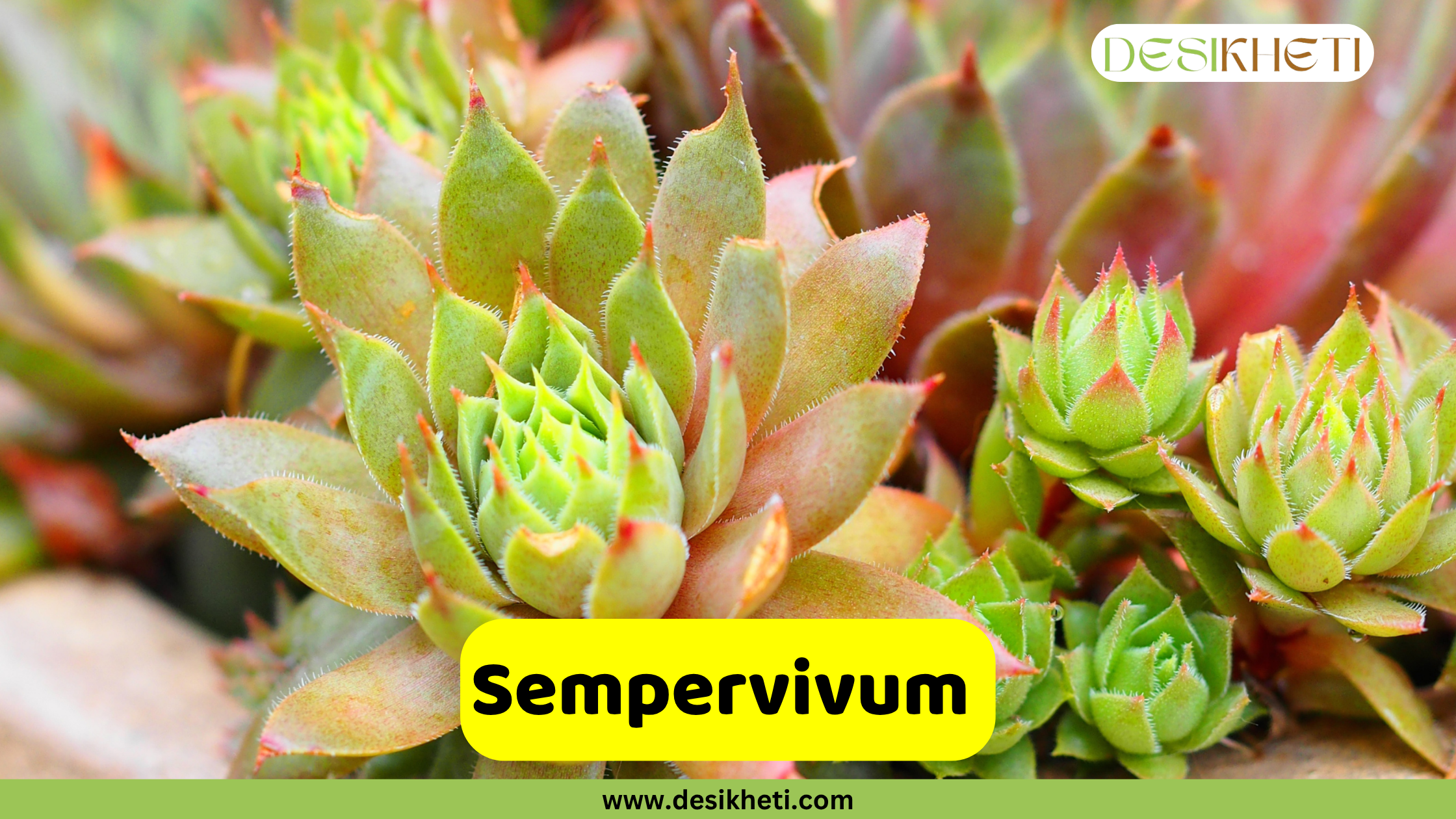
Botanical Name: Sempervivum tectorum
Commonly known as Hens and Chicks, Sempervivum forms compact, attractive rosettes with green leaves often tinged with red or purple. These cold-hardy succulents reproduce prolifically through offsets (“chicks”) that cluster around the main rosette (“hen”).
Sempervivum prefers full sun but can tolerate partial shade. The plant needs little water and does best in sandy, fast-draining soil.
Uses & Benefits:
- Extremely frost-tolerant and low-maintenance.
- Great for ground cover, green roofs, or container gardens.
- Easy propagation from offsets makes it perfect for large spreads.
- Drought-tolerant and decorative all year round.
Propagation Methods:
Offsets (Chicks): Gently separate the offsets from the mother plant and replant them in well-draining soil. Allow the offsets to establish roots before watering.
Seeds: Can be propagated from seeds sown in spring. This method is slower and less common.
String of Pearls
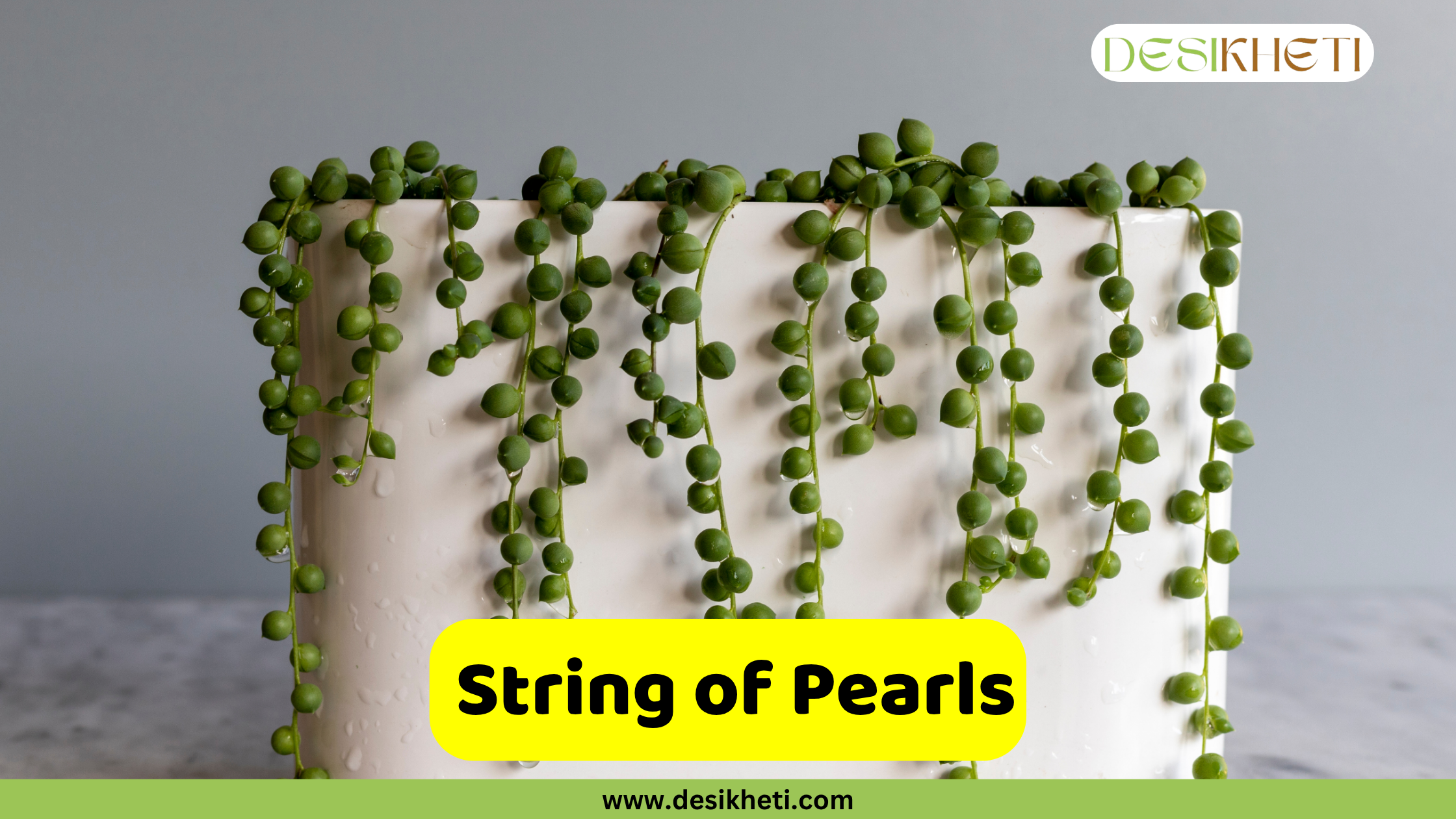
Botanical Name: Curio rowleyanus
String of Pearls is a visually unique trailing succulent with small, bead-like leaves that resemble green pearls strung along a vine. This cascading form makes it ideal for hanging baskets or high shelves. The plant can grow up to 2–3 feet in trailing length and occasionally produces fragrant white flowers. Its cascading habit makes it a popular choice for hanging baskets and shelves.
It thrives in bright, indirect sunlight and can tolerate some direct morning sun but should be protected from harsh afternoon rays. Place it near windows, balconies with filtered light, or in hanging containers where it can drape freely. Water thoroughly when the top inch of soil feels dry; however, overwatering can lead to root rot.
Uses & Benefits:
- Excellent for hanging baskets and vertical décor.
- Adds a dramatic trailing element to indoor plant arrangements.
- Easy to propagate through stem cuttings.
- Unique appearance makes it a favorite among collectors.
Propagation Methods:
Stem Cuttings: Take 3- to 4-inch stem cuttings and allow them to be callous for a day. Place them on moist, well-draining soil, pressing lightly so the nodes contact the soil. Roots will develop from the nodes.
Water Propagation: Place stem cuttings in water until roots develop, then transfer to soil.
Moon Cactus
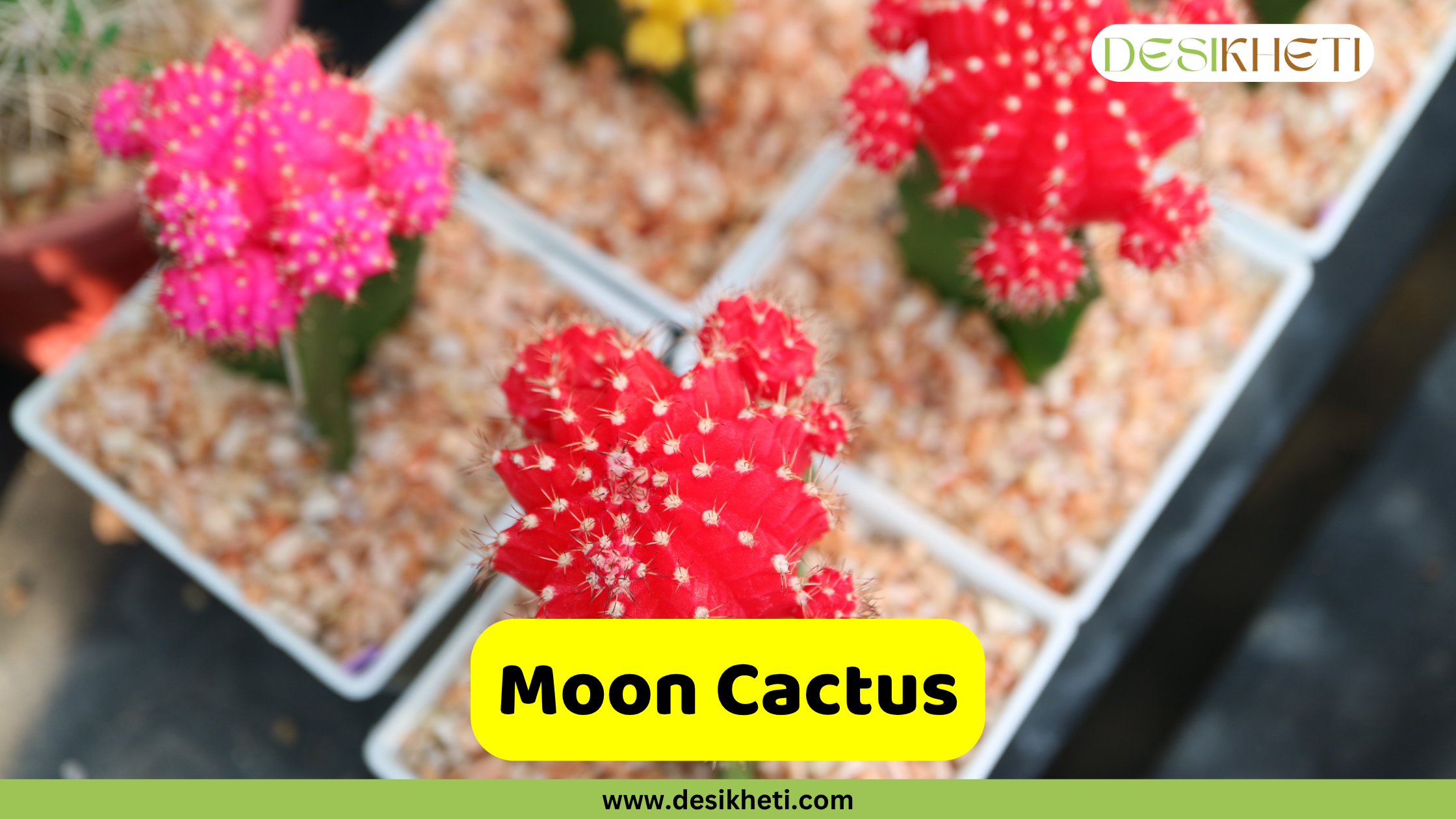
Botanical Name: Gymnocalycium mihanovichii (grafted onto Hylocereus spp.)
Moon Cactus is a grafted plant featuring a brightly colored top often red, pink, yellow, or orange sitting on a green rootstock cactus. The top section lacks chlorophyll and requires grafting to survive. It is a compact plant, typically reaching 4–6 inches in height.
It thrives best in bright, indirect light and should be shielded from harsh sun, which can damage the colorful top. The Moon Cactus is ideal for indoor spaces such as window sills, desks, or patios with filtered light. Water thoroughly when the top inch of soil is dry. Avoid overwatering, and use a gritty, well-draining mix.
Uses & Benefits:
- Ideal decorative piece for desks and indoor spaces.
- Great gifting plant due to its compact size and color.
- Requires minimal maintenance.
Propagation Methods:
Grafting: Moon Cacti are grafted plants; propagation involves grafting the colorful scion onto a suitable green cactus rootstock. Offsets from the scion can be grafted onto new rootstocks to create new plants.
Tiger Tooth Aloe

Botanical Name: Aloe juvenna
Tiger Tooth Aloe is a small, spiky succulent with triangular, stacked leaves covered in white markings and toothed edges hence the name. The plant grows in clumps and reaches about 6–12 inches tall.
It enjoys bright, indirect to direct sunlight and prefers warm temperatures between 18–30°C. However, prolonged strong direct sun, especially in hot climates, may cause sunburn.
Tiger Tooth Aloe can be placed in indoor pots near sunny windows or outdoors in rock gardens and containers. Let the soil dry between waterings and ensure good drainage.
Uses & Benefits:
- Offers ornamental appeal with its tiger-like markings.
- Forms attractive clumps that fill containers or garden beds.
- Drought-tolerant and heat-resistant.
- Propagates easily via offsets (pups).
Propagation Methods:
- Offsets (Pups): Separate the small offshoots from the base and plant them in well-draining soil.
Graptopetalum
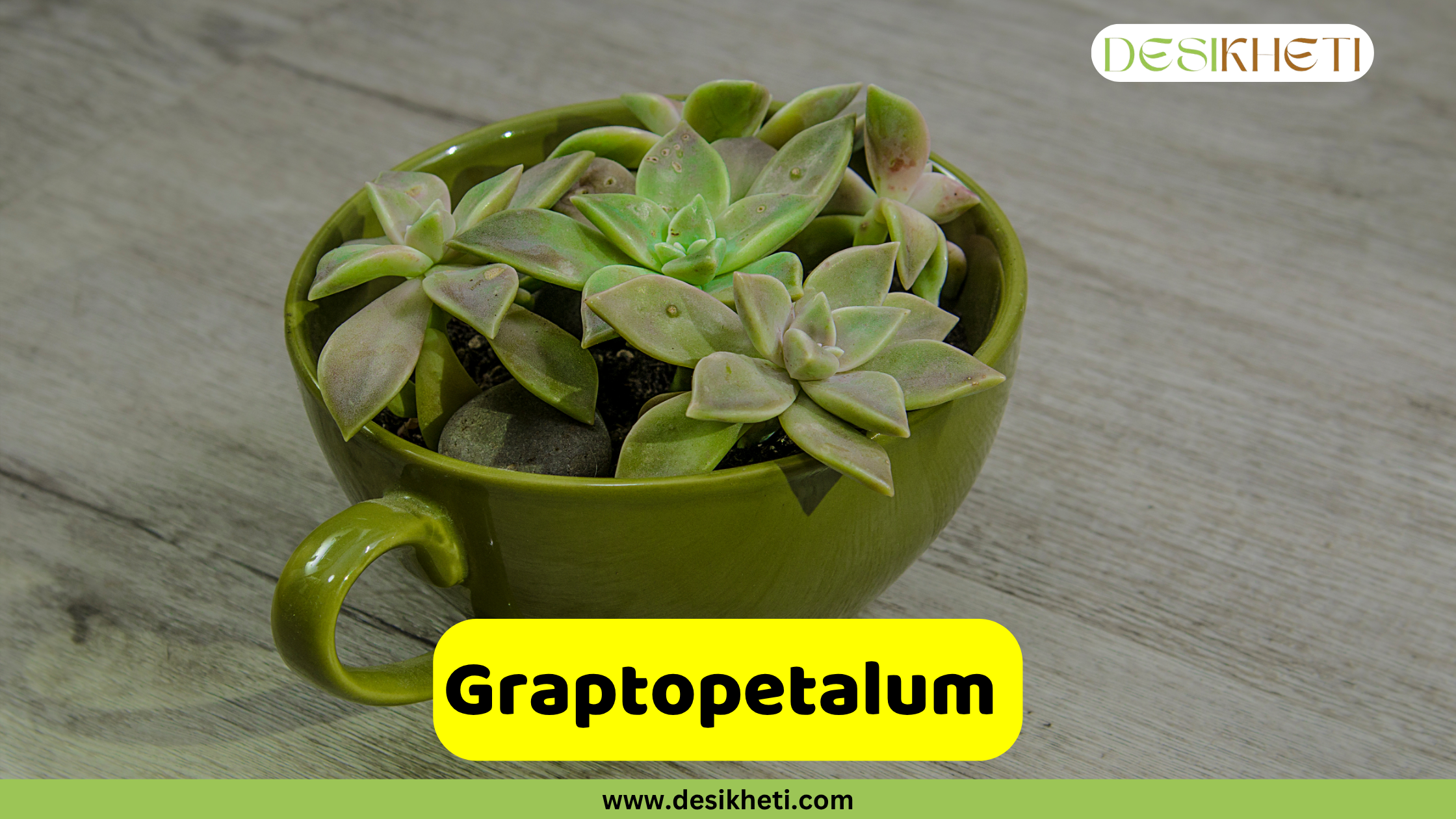
Botanical Name: Graptopetalum paraguayense
Also known as Ghost Plant, this succulent forms graceful rosettes of pale grey to bluish-pink, powdery leaves. It has a delicate trailing or spreading growth pattern, making it ideal for hanging containers or spilling over garden edges. In spring, it produces small, star-shaped white or yellow flowers.
It thrives in full sun to partial shade. The more sunlight it receives, the more vivid and defined the leaf colors become. Ideal locations include outdoor balconies, sunlit shelves, or garden beds with ample light. Use a well-draining succulent mix and avoid overwatering.
Uses & Benefits:
- Popular for its pastel leaf color and elegant rosette shape.
- Excellent for cascading planters and living walls.
- Easy to propagate from fallen leaves or stem cuttings.
- Tolerates drought and poor soils once established.
Propagation Methods:
- Leaf Cuttings: Gently remove a healthy leaf, allow it to be callous over a few days, then place it on well-draining soil. Mist lightly until roots develop.
- Offsets: Separate the small rosettes that form around the base and plant them in soil.
A Few Other Succulent Plants
- String of Dolphins
- Baby Toes
- Bear Paw
- Campfire Crassula
- String of Hearts
- Plover Eggs
- Purple Pearl
- Silver Dollar Plant
- Topsy Turvy
Growing and Care Tips for Succulents
- Use Well-Draining Soil: Plant succulents in a cactus or succulent mix. Good drainage is essential to prevent root rot.
- Water Sparingly: Most succulents prefer to dry out completely between waterings. Follow the “soak and dry” method: water thoroughly, then wait until the soil is bone dry.
- Ensure Proper Sunlight: Place your succulents in bright, indirect light. Some tolerate direct morning sun but should be protected from harsh afternoon rays, especially soft-leaved types.
- Avoid Humidity & Overcrowding: Succulents thrive in dry air. Ensure airflow around the plants to avoid fungal issues.
- Choose the Right Pots: Use containers with drainage holes to let excess water escape and keep roots healthy.
- Fertilize Occasionally: During the growing season (spring and summer), feed succulents with a diluted, balanced fertilizer once a month.
- Protect from Frost: Most succulents are not frost-hardy. In cooler regions, move them indoors or cover them during winter.
- Keep an Eye on Pests: Watch for signs of mealybugs, aphids, or spider mites. Neem oil or insecticidal soap can help.
- Rotate Regularly: If grown indoors, rotate your pots every few days to ensure even sunlight exposure and growth.
- Prune Dead Leaves: Regularly remove dried or dead leaves at the base to keep the plant healthy and improve airflow.
Succulents are ideal companions for urban gardeners, plant lovers, and busy homeowners alike. Their sculptural beauty, air-purifying qualities, and adaptability make them perfect for indoor settings in India’s diverse climates. Whether you’re creating a vibrant windowsill garden, decorating your office, or looking for thoughtful gift ideas, succulents offer charm with minimal effort.
From the cascading elegance of String of Pearls to the architectural strength of Agave, each plant in this list has something special to offer. By choosing the right succulent and providing it with basic care, you can create a stunning, stress-free green zone in any corner of your home. Start small, grow slowly and let your plant collection bloom beautifully!
FAQs on Succulents
1. What is the main use of aloe vera?
A. Aloe vera is widely used for its healing and soothing gel, which helps treat burns, cuts, skin irritation, and sunburns. It’s also used in skincare, haircare, and as a natural moisturizer.
2. What is special about the jade plant?
A. The jade plant is a low-maintenance succulent that symbolizes prosperity and good luck. It stores water in its thick leaves and can live for decades with minimal care.
3. Does Echeveria need water?
A. Yes, but very little. Water only when the soil is completely dry, as overwatering can easily lead to root rot.
4. What is the snake plant famous for?
A. Snake Plant (Sansevieria) is famous for being an air-purifying plant that removes toxins like formaldehyde and benzene. It’s also extremely hardy and drought-tolerant.
5. Do zebra plants grow fast?
A. Zebra plants (Haworthia or Aphelandra) generally grow slowly.
6. What is the real name for the crown of thorns?
A. The botanical name for Crown of Thorns is Euphorbia milii. It is a flowering succulent native to Madagascar and known for its thorny stems and colorful bracts.
7. Where is the best place to put a Flaming Katy?
A. Flaming Katy (Kalanchoe blossfeldiana) prefers a bright, sunny windowsill indoors. It needs indirect light and should be kept away from cold drafts or extreme heat.
8. Why is my panda plant dying?
A. A Panda Plant (Kalanchoe tomentosa) may die due to overwatering, poor drainage, lack of sunlight, pest infestation, etc. Ensure the soil dries out between waterings and keep it in bright light.
9. Is Sempervivum an indoor or outdoor plant?
A. Sempervivum (also called Hens and Chicks) is primarily an outdoor succulent, as it is cold-hardy. However, it can be grown indoors if placed in a sunny, well-ventilated spot.
10. Do strings of pearls produce seeds?
A. Yes, String of Pearls (Senecio rowleyanus) can produce small white flowers that may be pollinated to form seeds, but seed production is rare in indoor settings.
11. Why is my Tiger Tooth Aloe plant turning yellow?
A. Yellowing in Tiger Tooth Aloe (Aloe juvenna) is usually due to overwatering, poor drainage, or sudden changes in sunlight.
